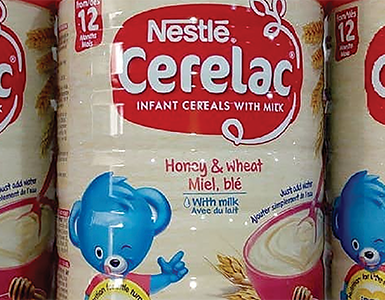APPETITE: Nearly quarter of binge-eating participants in a study found have used cannabis in the past three months…
By Newswise
Cannabis may play a particular role in promoting binge eating among its users, inducing their craving for pleasurable high sugar or high fat foods.
A new research, conducted by Drexel University’s Center for Weight, Eating and Lifestyle Science (WELL Centre), has examined how often people experiencing binge eating are also using cannabis recreationally, and whether patients who use cannabis experience more severe eating disorder symptoms or symptoms of struggling with mental health.
While there has been a great deal of research on the impact of cannabis on eating habits, less is known about the effects of cannabis use on individuals with a binge eating disorder. Binge eating is the experience of feeling out of control when eating or unable to stop eating. Cannabis may play a particular role in maintaining binge eating as research suggests cannabis can increase how pleasurable or rewarding people find high sugar or high fat foods.
Recently published in Experimental and Clinical Psychopharmacology, the research found more than 23 percent of the 165 study participants reported using cannabis in the past three months – either “once or twice” or “monthly.” These participants were individuals seeking treatment for binge eating and reported their cannabis and alcohol use as part of that process.
“Distinguishing the relationship between cannabis use, eating disorder severity and other psychiatric symptoms in binge eating patients is necessary for informing screening and clinical recommendations,” said lead researcher Megan Wilkinson, a doctoral student in Drexel’s College of Arts and Sciences.
While study participants who used cannabis reported “a strong desire or urge to use cannabis” and they also drank alcohol more frequently and reported more problems related to their alcohol use; the research team noted that participants with binge eating disorders who used cannabis did not have more severe eating disorder or depression symptoms.
“Both alcohol and cannabis can impact an individual’s appetite and mood. Our finding that patients with binge eating who use cannabis also drink more alcohol may suggest that these individuals are at a higher risk for binge eating, given the compounded effects on appetite and mood from these substances,” said Wilkinson.
“Treatments for binge eating should explore how substance use affects hunger, mood, and eating for patients.”
Participants also completed surveys and interviews about their binge eating, other eating disorder symptoms and depression. The research team compared individuals who reported cannabis use to individuals who did not report cannabis use to see if there were statistically significant differences in their alcohol use, eating disorder symptoms, or depression symptoms.
The findings indicate that a notable subset of the participants with binge eating disorders use cannabis and experience strong desires or urges to use cannabis. Additionally, using cannabis appears to be related to drinking patterns and problems with drinking (e.g., needing more alcohol to feel intoxicated, inability to control drinking) for patients with binge eating.
“We hope this research is helpful for clinicians treating patients with binge eating, as it can provide them with updated information about the prevalence of cannabis use in their patients,” said Wilkinson.
“We recommend that clinicians screen for cannabis and alcohol use in all their patients and assess any potential problems the patient may be experiencing related to their substance use.”
Wilkinson also noted that updated research on cannabis use in patients with binge eating will be required regularly due to changing social norms and laws related to cannabis in the United States. Next, Wilkinson and her colleagues are planning to explore the ways that cannabis use may impact hunger and mood for patients with binge eating, and therefore potentially exacerbate their binge eating symptoms.
HOW DIET AFFECTS ADHD IN KIDS
COMPLEX: Renowned dietitian shares 6 diet tweaks to help manage ADHD
By WSAM Reporter
Attention Deficit Hyperactivity Disorder (ADHD) is one of the most commonly occurring disorders affecting South African children and adolescents, and while it is treated with medication and other interventions, studies show that diet can also influence ADHD symptoms.
To assist in managing these symptoms, Laager Tea4Kidz partner dietitian Mbali Mapholi has shared six dietary tips for children with ADHD.
“ADHD is a neurodevelopmental condition characterised by inattention, hyperactivity, and impulsivity,” explained Mapholi. “While the exact cause is complex and not fully understood, ongoing research explores the relationship between diet and ADHD symptoms.”
She said that, while no child is the same, some studies are suggesting that nutrient deficiencies, dietary patterns, food sensitivities, and blood sugar levels may influence ADHD symptoms.
“For example, addressing deficiencies in vitamins and minerals, avoiding potential trigger foods, and maintaining stable blood sugar levels through a balanced diet are important. However, it’s crucial to approach dietary changes cautiously and in collaboration with a dietitian, as they should complement, not replace, evidence-based treatments like behavioural interventions or medication when necessary.”

“Managing the diet of a child with ADHD involves making thoughtful and strategic choices to support their overall well-being. While there is no one-size-fits-all solution, here are some practical improvements you can consider,” she explained.
Mapholi’s 6 dietary tips for ADHD are:
- Varied diet
Ensure your child receives a diet with a variety of fruits, vegetables, whole grains, lean proteins, and healthy fats.
Tip: Treats should not replace snacks. Limit processed foods, sugary snacks, and carbonated drinks, as these can contribute to rapid energy spikes and crashes if consumed as treats.
- Omega-3 fatty acids
Include foods rich in omega-3 fatty acids, such as fatty fish like pilchards and smoked salmon, seeds like flaxseeds and chia seeds, and nuts like walnuts.
Tip: Try delicious, quick smoothie recipes that the child will love, incorporating seeds. Alternatively, cook pilchards pasta, a kid-friendly meal that boosts omega-3 intake.
Protein-rich foods
Include protein in each meal from sources like lean meats, poultry, fish, eggs, dairy, legumes, and nuts.
Tip: Add chicken strips/nuggets, boiled eggs, yoghurts, nuts, and nut butter into their diet in small manageable quantities throughout the day.
- Avoid caffeine and sugary beverages
Limit caffeine intake as excessive caffeine can contribute to restlessness and affect sleep. There are no clear caffeine recommendations for children and teenagers so it is recommended that they should not consume caffeine. Ensure your child stays hydrated by drinking enough water throughout the day as dehydration can affect cognitive function.
Tip: Add Laager Rooibos tea which is caffeine-free and naturally sugar-free, as a versatile beverage served hot or in delicious homemade Rooibos tea. You can add fruits and herbs to the tea. Laager Tea4Kidz has a range of delicious flavours that appeal to children.
- Iron-rich foods
Include iron-rich foods like lean meats, beans, lentils, and fortified cereals as iron is important for cognitive function.
Tip: Incorporate canned red kidney beans in wraps, start the day with a bowl of fortified cereal with milk and a side of fruit, or add lentils to pasta dishes like bolognese or sloppy joes. The key is in serving these foods and allowing the child to share how they like their food served & cut.
- Regular meals and snacks
Children with ADHD may struggle with getting through large quantities of food, so aim for regular meals and snacks to keep blood sugar levels stable, preventing energy crashes that may affect attention and mood.
Tip: During mealtimes, offer food before a drink; for example, during breakfast, offer breakfast first and then, when the child is satisfied, encourage them to have their Laager Rooibos tea.
Laager Rooibos and Laager Tea4Kidz are available in a range of delicious flavours. For a range of healthy recipes, advice and tips visit www.joekels.co.za, or @LaagerRooibosTea on Facebook and Instagram. For more insightful dietary information, follow Mbali Mapholi @Urbandietitian on Instagram.

































